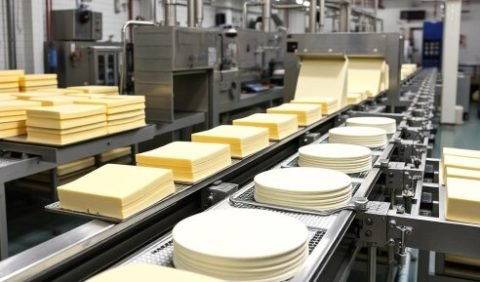The modern margarine bulk filling machine represents a remarkable triumph of industrial engineering, combining precision mechanics with sophisticated control systems to transform production lines across the food manufacturing sector. These elegant behemoths stand as sentinels of efficiency in factories worldwide, their rhythmic movements orchestrating the seamless transfer of creamy yellow substance from mixing vessels to consumer packaging with balletic grace and unwavering accuracy.
The Margarine Manufacturing Renaissance
There exists something almost hypnotic about watching a properly calibrated filling system at work—the gleaming stainless steel components moving in perfect synchronicity, the consistent dollops of margarine descending into waiting containers. This mechanical poetry belies the complex engineering calculations and design considerations that make such performance possible.
Consider the transformation these systems have undergone:
- From rudimentary manual filling operations requiring armies of workers
- Through semi-automated systems with significant human oversight
- To today’s fully integrated production ecosystems requiring minimal intervention
- Culminating in smart factories where AI orchestrates filling parameters in real-time
“Singapore’s margarine producers have reported efficiency improvements of up to 42% after transitioning to modern bulk filling systems, with corresponding reductions in labour costs approaching 65%” — Singapore Food Manufacturers’ Association
Decoding the Technical Symphony
The uninitiated observer might perceive these machines as merely glorified dispensers, but such a characterisation betrays profound ignorance of their sophistication. Each component serves a precisely calculated purpose within the greater mechanical organism.
Temperature Management Systems
Margarine possesses notoriously temperature-sensitive characteristics, existing in that delicate state between solid and liquid. The filling system must maintain precise thermal conditions throughout the filling process—too warm and the product flows inconsistently; too cool and it resists smooth dispensing entirely.
Volumetric Precision Mechanisms
The heart of any respectable filling machine lies in its volumetric dispensing apparatus. These mechanisms, whether piston-driven, flow-meter controlled, or weight-based, must deliver exact quantities despite variations in product viscosity and ambient conditions.
Hygiene-Forward Design Philosophy
Given margarine’s susceptibility to rancidity and contamination, modern filling systems incorporate clean-in-place features allowing thorough sanitisation without extensive disassembly—a consideration that would have seemed miraculous to earlier generations of food manufacturers.
Singapore’s Distinctive Approach
In the crystalline efficiency of Singapore’s food manufacturing sector lies a particular devotion to precision engineering that borders on the reverential. The island nation’s approach to margarine filling technology reflects this cultural predisposition toward perfection.
- Integration of humidity control mechanisms specific to tropical environments
- Enhanced corrosion-resistant materials addressing maritime air challenges
- Sophisticated local technical support infrastructures minimising downtime
- Rigorous compliance with the nation’s exceptionally stringent food safety protocols
- Adaptation to space-efficient designs reflecting the premium on manufacturing floor area
“Singapore’s engineering ethos has influenced margarine filling machine design philosophies worldwide, particularly in the realms of spatial efficiency and sanitation protocols” — International Food Processing Equipment Review
Aesthetic Considerations in Machine Design
One cannot discuss these magnificent systems without acknowledging their visual appeal—an aspect often overlooked in industrial equipment discussions. The finest examples of the craft combine ruthless functionality with a certain sculptural elegance.
- Thoughtfully contoured stainless steel surfaces that shed cleaning solutions efficiently
- Observation ports providing visual confirmation of proper operation
- Intuitive control interfaces reflecting sophisticated human factors engineering
- Cable management systems maintaining visual order and operational safety
- Harmonious integration with surrounding equipment creating unified production aesthetics
Selection Criteria for Discerning Manufacturers
Choosing the appropriate filling technology requires consideration of several critical factors:
- Production Volume Requirements:
The machine’s throughput capacity must align with production targets
- Product Consistency Variables:
Different margarine formulations present unique handling challenges
- Package Format Diversity:
Flexibility to accommodate various container types enhances long-term value
- Cleaning Protocol Efficiency:
Minimising downtime for sanitation improves overall equipment effectiveness
- Integration Capabilities:
Seamless communication with upstream and downstream equipment optimises workflow
Return on Investment Considerations
The financial calculus surrounding these sophisticated systems extends beyond the initial capital expenditure:
- Reduced product giveaways through precise filling tolerances
- Decreased labour requirements for production line operations
- Minimised quality control rejections due to filling inconsistencies
- Extended product shelf life resulting from reduced contamination risk
- Enhanced brand reputation through consistent product presentation
“Our analysis indicates that properly specified margarine filling equipment typically achieves complete return on investment within 26 months of installation” — Singapore Institute of Food Science and Technology
Emerging Technological Horizons
The continued evolution of filling technology promises even greater refinements:
- Adaptive filling algorithms that respond to minute variations in product characteristics
- Predictive maintenance systems alerting operators to potential failures before they occur
- Enhanced energy efficiency reducing operational costs and environmental impact
- Improved clean-in-place systems minimising production interruptions
- Advanced vision systems ensuring package integrity and fill-level compliance
Implementation Best Practices
The transition to advanced filling technology requires methodical planning:
- Comprehensive staff training programmes ensure operational excellence
- Phased implementation minimises production disruptions
- Detailed documentation of standard operating procedures
- Establishment of key performance indicators for ongoing evaluation
- Regular calibration and maintenance schedules preserve optimal performance
Conclusion
The sophisticated choreography of modern margarine production represents one of the food industry’s most impressive technological achievements. What once required armies of workers and accepted significant quality variation now proceeds with remarkable precision and efficiency. Manufacturers seeking competitive advantage in increasingly challenging market conditions would be well-advised to investigate the transformative potential these systems offer. Your production facility’s future profitability and reputation for quality may well depend on the capabilities and performance of your chosen margarine bulk filling machine.
